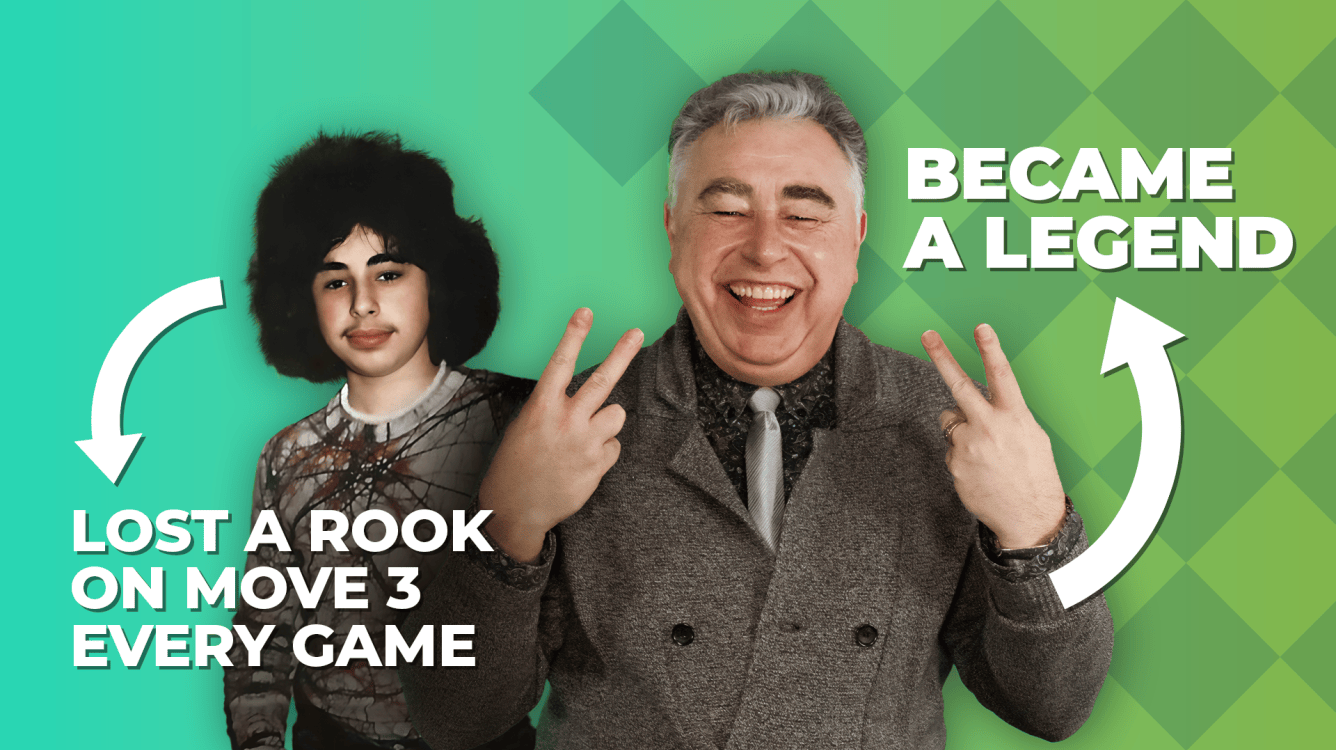
These 12 Chess Masters Started Late But Became Legends Anyway
Do you still remember when you were bitten by the chess bug? Followed by that feverish desire to improve in the game? Only to realize that you started “too late” to amount to anything?
In this era of prodigies and 12-year-old grandmasters, reaching the top seems impossible unless you start playing in your diapers—but nothing could be further from the truth!
Rough childhood, armed conflict on a global scale, and life in general kept these 12 legends away from chess. But they have proven that you can pick up the game late and still become the best player you can be.
If you ever need reassurance that the time you spend on chess is worthwhile—even if you picked up the game at an advanced age—then read on and be inspired.
Table of Contents
- Wilhelm Steinitz, The Father of Modern Chess
- Joseph Henry Blackburne, The Black Death
- Mikhail Chigorin, The Original Chess Cowboy
- Georg Salwe, The Jedi Master of The Chessboard
- Harry Nelson Pillsbury, The American Meteor
- Akiba Rubinstein, The Endgame Magician
- Mikhail Botvinnik, The Iron Logician
- Evgeni Vasiukov, Longevity Personified
- Rani Hamid, The Bangladeshi Chess Queen
- Yasser Seirawan, Everyone’s Favorite Chess Uncle
- Ye Jiangchuan, China’s 1st Super-GM
- Jonny Hector, The Modern Day Gambiteer
- Conclusion
1. Wilhelm Steinitz, The Father Of Modern Chess

and was officially the world champion at age 50. Photo: Wikimedia Commons.
Wilhelm Steinitz was born into extreme poverty on May 14, 1836, the youngest of a tailor’s 13 sons to survive. Combine dirt-poor living conditions with a late start in chess at age 12, and most people would’ve given up.
But Steinitz wasn’t “most people.”
Battle-hardened in life and over the board, he went on to become the first World Chess Champion, at age 50, no less! He also remained unbeaten in match play for 32 years, from 1862 to 1894. Steinitz achieved his success in 1872 by playing in the swashbuckling, sacrificial style that was popular at the time.
In Vienna in 1873, however, he introduced the positional approach, which became the basis for modern chess—and the debut was a massive success. He won the tournament with a score of 22.5 points out of 27 games (a win rate of 83.33%)!
Watch how Steinitz secured the bishop pair, tamed the enemy knights, and collected small plusses until his advantage reached epic proportions.
2. Joseph Henry Blackburne, The Black Death
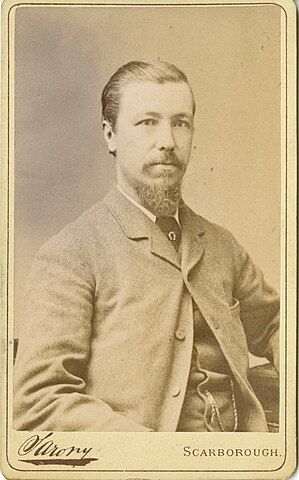
Photo: Wikimedia Commons.
Born on December 10, 1841, Joseph Henry Blackburne’s first board game was draughts.
But a 17-year-old Blackburne heard about Paul Morphy’s European tour, and the stories inspired him to switch to chess.
Less than three years after picking up the moves, Blackburne played in the first-ever round-robin chess tournament (London 1862), where he beat Steinitz in a highly unbalanced French Defense.
Impressive! But it was only in 1873 that Blackburne earned the nickname “The Black Death.” In the same tournament where Steinitz introduced the basics of positional play, Blackburne shared first place after 10 mini-matches. He may have lost the playoffs, but the event marked the start of his elite chess career.
At various times, between 1873 and 1889, he was ranked second in the world and scored podium finishes against the younger generation of chess masters.
Blackburne loved wide-open, tactical shootouts, and his combinations are a staple of tactics training books.
Plenty of crazy openings have been named after Blackburne, too, like the Blackburne-Kloosterboer Gambit in the Scandinavian Defense. The latest engines proved that this gambit is playable in fast time controls, and it’s the backbone of the repertoire of the Secret Blitz Weapons: Scandinavian Defense Chessable course.
3. Mikhail Chigorin, The Original Chess Cowboy
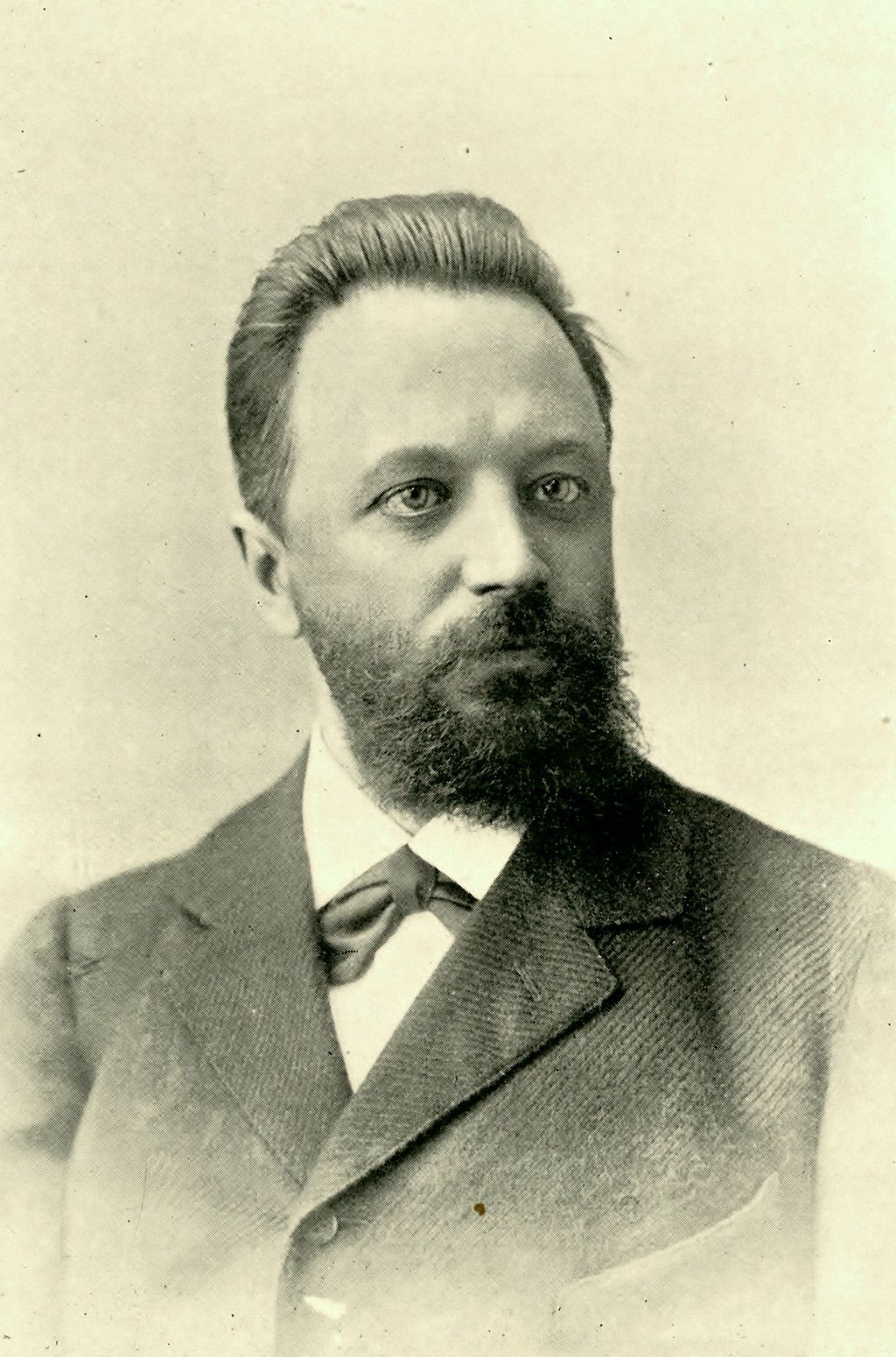
Photo: Wikimedia Commons.
GM Adhiban Baskaran may be the sheriff of the 1.b3 Cowboys, but Mikhail Chigorin was the OG.
Chigorin was born on October 21, 1850. He lost both of his parents early in life, which forced him to enter Gatchinsk Orphans’ Institute at age 10.
His school teacher taught him the basics of chess when he was 16 years old. But he only started taking the game seriously at 24, after he finished his studies and worked as a government officer. From there, Chigorin immersed himself in all things chess.
He developed into a true chess legend with a well-honed eye for tactics and combinations:
Plus, he had an imaginative “rule-bending” approach to openings. Oh, and unlike most masters he preferred knights over bishops, too! The variation of the Queen’s Gambit named after him features both of these proclivities. The Cheeky Chigorin breaks opening principles by blocking the c-pawn, then gives up the bishop pair in an attempt to outmaneuver White with knights.
Chigorin went on to play for the World Chess Championship twice, in 1889 and 1892. While he lost both matches, Chigorin’s passion for the game became a major source of inspiration for the Soviet chess school—the same school that dominated the 20th century and produced nine classical world champions.
4. Georg Salwe, The Jedi Master Of The Chessboard
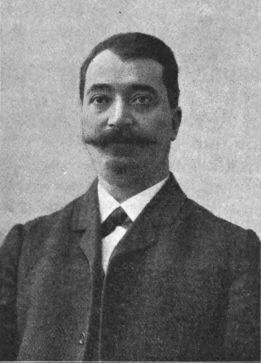
Photo: Wikimedia Commons.
Georg Salwe was born on December 12, 1862. And while he learned the rules of chess very early, he didn’t start playing until he was 20 years old. Salwe also didn’t play in a serious tournament until he was 40, in Kiev 1903. Worse, World War I cut him off from tournament opportunities.
But what Salwe lacked in time, he more than made up for with Jedi master levels of self-control.
Salwe didn’t allow a bad position to dishearten him. Nor a good position to excite him. He hoped for the best with every move—while also expecting the worst. And he had a knack for saving bad positions, too. These qualities allowed Salwe to make the best of what he had. And did he shine bright!
He finished fourth in his first event—then recorded his best result in 1906 by winning the fourth All-Russian Masters’ Tournament, 1.5 points ahead of second place. He also earned top-three finishes in Lodz 1906, the fifth All-Russian Masters’ Tournament, Lodz 1908, Warsaw 1908, and other tournaments.
5. Harry Nelson Pillsbury, The American Meteor

but accomplished a great deal in those years.
Photo: Wikimedia Commons.
Harry Nelson Pillsbury was born on December 5, 1872, and picked up the game of chess when he was 16 years old. After only two years of playing, however, he challenged Baltimore chess expert Henry Nathan Stone to a match—which Pillsbury won 5–2!
The steamrolling distinguished Pillsbury as an elite chess player, and he never looked back.
In 1892, Pillsbury clashed against Steinitz in a two-game “pawn odds” match, and the former won both encounters. In 1895, sponsored by the Brooklyn Chess Club, 22-year-old Pillsbury went on a mission in Europe—to win the strong Hastings International Chess Congress, where the world’s strongest masters were participating.
"I shall fight every game for all it is worth, hopeful as to the final result,” said Pillsbury in a letter to the Brooklyn Chess Club. "I am living at Cornwallis gardens, far from the maddening crowd… and I walk or drive everyday, most of all making sure of the quiet necessary to do good work over the board."
I shall fight every game for all it is worth.
— Harry Nelson Pillsbury
The warrior-monk focus served Pillsbury well. After 21 rounds of high-quality, hard-fought chess, he came out on top with 16.5 points. He beat then-world champion Emanuel Lasker, former world champion Steinitz, as well as title contenders Chigorin, Siegbert Tarrasch, Carl Schlechter, and Isidor Gunsberg.
In the tournament, Pillsbury played classical openings, like the Queen’s Gambit, but with his stamp of dynamism.
Check out this game where, instead of applying pressure on the c-file, Pillsbury went after the enemy king with Nf3-e5 and f2-f4.
Pillsbury’s poor health tragically cut his bright chess career short. But he will always be remembered as the “American meteor.”
6. GM Akiba Rubinstein, The Endgame Magician

opening, middlegame, and endgame.
Photo: Wikimedia Commons.
Akiba Rubinstein was one of the greatest players never to have become the World Chess Champion. He was born on December 1, 1880, to a Jewish family who had planned for him to become a rabbi. Rubinstein, however, got a different idea when he picked up chess as a 14-year-old.
He trained and played with Salwe, whom we talked about earlier. In 1903, Rubinstein finished fifth in a tournament in Kyiv, which convinced him to pursue the life of a chess professional.
Rubinstein played his best chess from 1907 to 1912. Many also believed that he was stronger than the then-reigning champion, Lasker, from mid-1912 to mid-1914. And Rubinstein had the tournament victories and individual brilliancies to back up the claims.
Rubinstein won Carlsbad 1907 and the All-Russian Masters Tournament. He also shared first at St. Petersburg 1907. Then, in 1912, he recorded a string of five first-place finishes in major tournaments.
Rubinstein was unmatched in the endgame, especially rook endgames.
"Akiba, if you lived in the Middle Ages you would have been burned at the stake: what you do in rook endgames can only be called witchcraft!" said Austrian master Rudolf Spielmann.
What you do in rook endgames can only be called witchcraft!
— Rudolf Spielmann
After seeing the following game, you’ll probably think the same, too.
Rubinstein was also capable of tactical fireworks, and many of his combinations have become textbook examples of piece play. Check out this attack with the bishop pair:
Rubinstein was supposed to play in a world championship match with Lasker in 1914, but World War I struck and robbed him of the opportunity.
Still, he recorded impressive results decades after his prime—and enriched future generations with his countless contributions to opening theory.
7. GM Mikhail Botvinnik, The Iron Logician
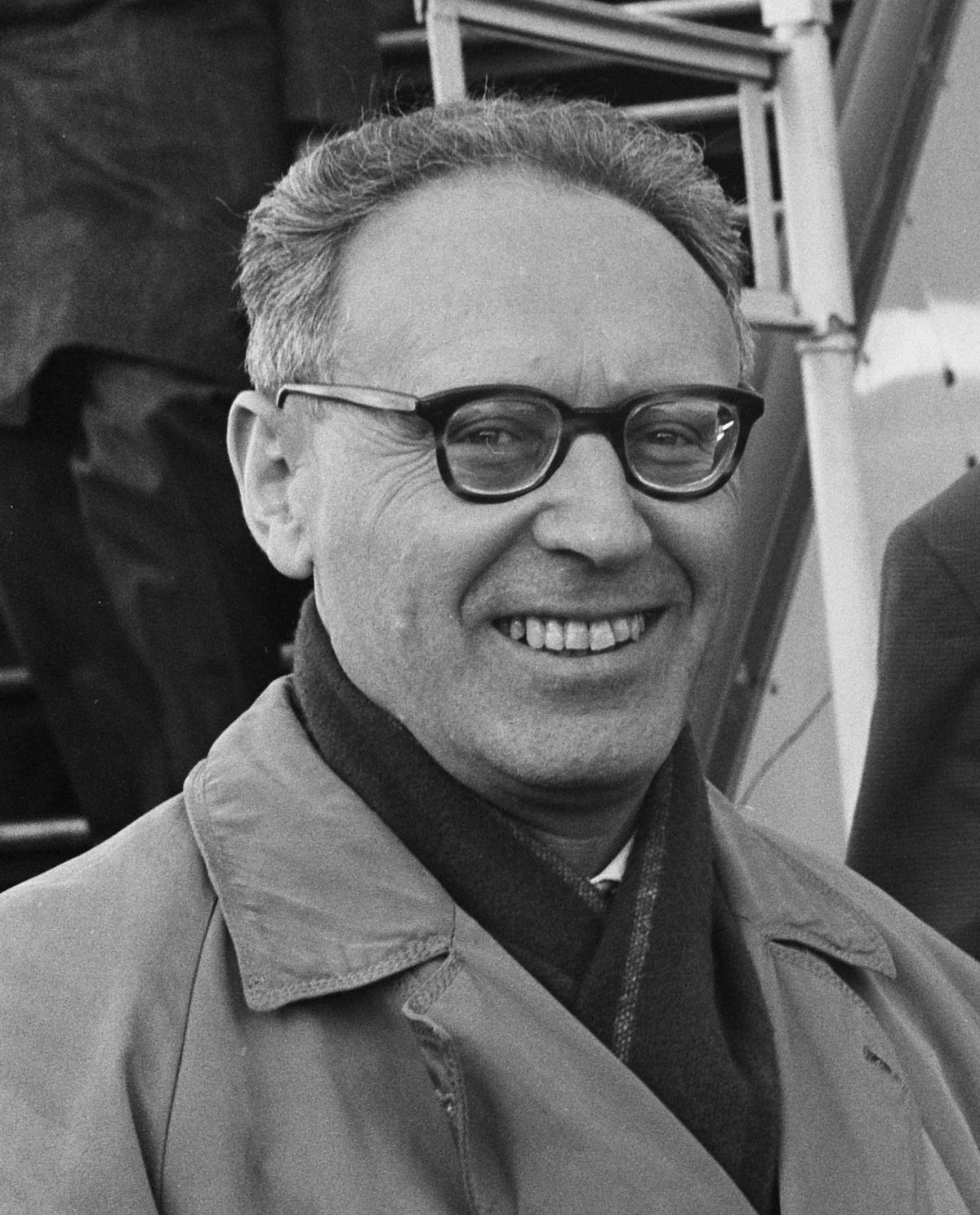
Like Steinitz, the sixth World Champion Mikhail Botvinnik learned chess at a relatively late age of 12.
He was born on August 17, 1911. In the autumn of 1923, using a homemade set, a school friend of his older brother taught Botvinnik the rules of chess. The future champ instantly fell in love with the game.
Only a year later, in the winter, Botvinnik won their school’s championship. He also lied about being three years older so that he would be accepted into the Petrograd Chess Assembly.
Botvinnik was the first player to turn chess into a science. He devised a method of preparation involving physical training, ruthless self-analysis, intense training games, and more.
From the mid-1920s to the mid-1930s, the Soviet Union was far from a chess superpower. The higher-ups back then were hesitant to send Soviet players to international competitions, fearing they might get crushed and humiliated.
But Botvinnik sought the challenge and went toe-to-toe with the best. His boldness was rewarded in Nottingham 1936, where he scored an undefeated shared first place and beat world champions in the scorecards. It was the first tournament victory by a Soviet chess player outside of their country.
As a player, Botvinnik embraced tense positions, with winning chances for both sides. He was confident in his strategic understanding and ability to navigate complications. He accepted positional weaknesses the opponent couldn’t exploit, so long as he got advantages he could exploit.
This ambitious approach is on display in this brilliancy, where he gave up the entire queenside to checkmate “The Chess Machine” Jose Raul Capablanca.
8. GM Evgeni Vasiukov, Longevity Personified
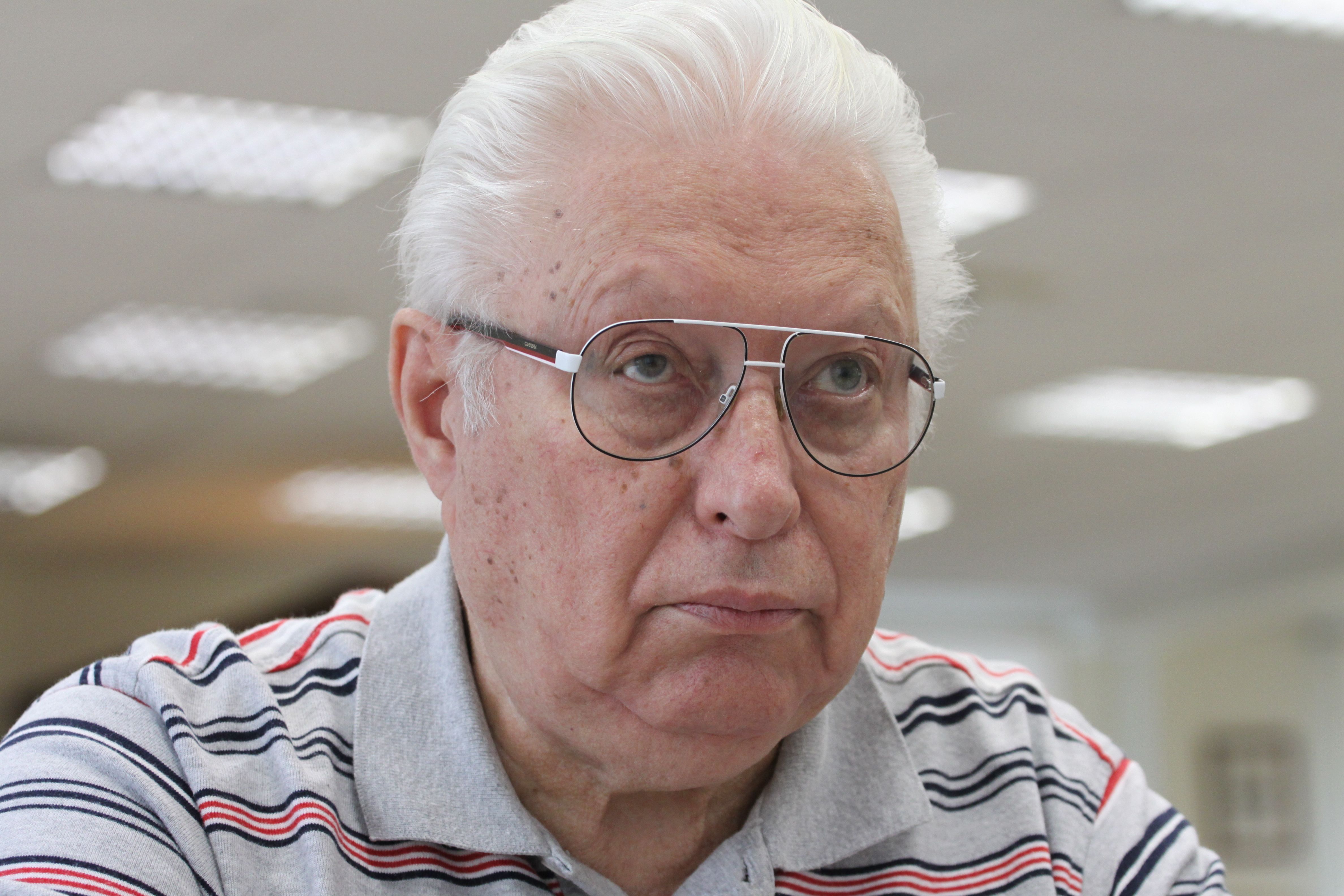
Evgeni Vasiukov may not be a household name. But in his prime, he was one of the strongest grandmasters in the world—with a peak ranking of world number 11 and a peak rating of 2580.
Vasiukov was born on March 5, 1933. He learned the moves at the age of 15. But he only needed seven years to win the Moscow City Chess Championship, besting many formidable GMs and contenders.
Vasiukov won the Moscow championship five more times—in 1958, 1960, 1962, 1972, and 1978. He also won the 1955 and 1956 World Students Championship and became the World Senior Chess Champion in 1995. All in all, Vasiukov recorded over 50 tournament victories.
His peak years also saw him beat many world champions, including GMs Vasily Smyslov, Mikhail Tal, and Tigran Petrosian.
Vasiukov combined a sharp “take no prisoners” style with original opening ideas. He exclusively played 1.e4, and scored impressive attacking victories against the best players of his day.
Here is Vasiukov’s demolition of one of the best defenders in history.
9. WIM Rani Hamid, Bangladeshi Chess Queen

Rani Hamid was born on July 14, 1944. She didn’t play chess until she was 34 years old—but she quickly proved that her late start was not relevant at all! She rose to prominence during the 1970s, when she played alongside men chess players in her country, Bangladesh.
Hamid went on to win the women’s national championship a record 20 times, the British Women’s Championship three times, and become the first Bangladeshi woman international master.
Hamid achieved her peak rating of 2230 FIDE in 1988. And yes, she still plays in tournaments today (most recently in September 2023)!
Hamid has an active positional style, which club players would do well to emulate. She prioritizes a healthy position and uses little bursts of tactics to convert her advantage.
Watch here how she methodically picked apart an American FM known for playing outrageous and even unsound openings. The way she pounced on the light square weaknesses, then swapped queens to create a favorable minor piece matchup is a chef’s kiss!
And here’s a tense back-and-forth game against none other than GM Evgeni Vasiukov, who out-rated her by 400 points!
10. GM Yasser Seirawan, Everyone’s Favorite Chess Uncle
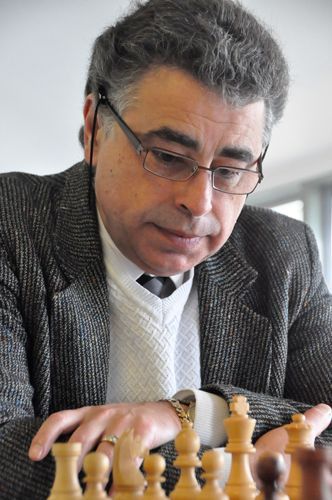
Yasser Seirawan was born on March 24, 1960, and his family immigrated from Syria to Seattle in 1967—the same year when tensions in the Middle East escalated into armed conflict.
But Seirawan still didn’t pick up chess until he was 12 years old, during the summer of 1972.
All sorts of weather disturbances kept everyone indoors. Fortunately, a good upstairs neighbor, David Chapman, introduced Seirawan to the joys of chess. And by “joys,” Seirawan meant getting clobbered.
In his course Winning Chess Openings, he recalled how he tried to get the queen out as soon as possible, experimented with 1.h2-h4 to swing the rook across the third rank, and failed game after game.
This ability to stay in touch with his once-beginner self is what makes Seirawan such an effective instructor and commentator. He explains difficult concepts with a calm demeanor and guides the viewer with clear explanations and analogies that click. That’s why he’s known as “everyone’s favorite chess uncle.”
You could almost forget that he’s a freakishly strong grandmaster!
Seirawan was a four-time U.S. chess champion, with a peak rating of 2658 FIDE and a peak ranking of world number 10. He is one of the few people to have beaten both GMs Garry Kasparov and Anatoly Karpov when they were reigning world champions.
Seirawan has a structural approach to playing. He loves grinding down the base of the enemy pawn chain, taking over weak squares with minor pieces, and scoring touchdowns with passed pawns. Here’s a game showcasing his strategic, pawn-structure-based style:
11. GM Ye Jiangchuan, China’s 1st Super-GM

GM Ye Jiangchuan was born on November 20, 1960.
He didn’t learn chess until he was 17 years old but needed only three years to win the Chinese championship in 1981. He was the national champion six more times, in 1984, 1986, 1987, 1989, 1994, and 1996.
Ye was the second Chinese chess player to have achieved the grandmaster title, which was awarded to him by FIDE in 1993.
He made history again in 2000 when he became the first-ever Chinese player to cross the 2600 Elo mark—which, at the time, was considered super-GM status!
Ye became the chief coach of the Chinese national teams the same year and then earned the FIDE senior trainer title in 2005. His coaching work took more and more time away from tournament chess. In June 2023, Ye played his first rated game in 16 years in a Chinese team event, scoring a win to bump his rating to 2603 Elo.
Ye is a strategic and aggressive player. He prefers repeatable systems with lasting positional pressure and lots of attacking potential.
With White, he plays 1.e4 almost exclusively. Against 1.d4, he responds with the King’s Indian Defense, while 1.e4 is usually met with the Taimanov Sicilian.
Enjoy this energetic win by Ye against a legendary King’s Indian slayer and a two-time world title contender:
12. GM Jonny Hector, The Modern-Day Gambiteer

Swedish GM Jonny Hector was born on February 13, 1964, and he learned the moves at 14 years old, just like me. The difference, however, is that he became a strong grandmaster!
His first major tournament win came after only seven years of playing—sharing first place in the 1987 Cappelle-la-Grande Open, alongside established grandmasters.
Hector earned his GM title from FIDE in 1991, and eight years later, he also became a GM under the International Correspondence Chess Federation (ICCF).
He won the national championship twice, in 2000 and in 2022, as well as numerous European tournaments. Hector secured sole or joint first place in Gausdal 1989, Oxford 1998, Hamburg 2001 and 2002, and in the Politiken Cup of 2000, 2006, 2008, and 2012.
Hector is the man to follow if you love gambits and mating attacks. He plays aggressive “cut and thrust” chess, complemented by an arsenal of unusual and crazy, sharp openings.
Check out his 24-move-miniature, featuring perhaps the most romantic gambit of all time.
Hector’s energetic and entertaining style has been an inspiration for many Chessable authors—with many of his openings featured in Grandmaster Gambits 1.e4 and The GothamChess 1.e4 Repertoire.
Cheers to the Swedish gambiteer, who keeps pumping out brilliancies for us to enjoy!
Conclusion
That wraps up our list of 12 late-bloomers who became chess legends anyway. Whenever you regret having started late in the royal game or doubt if you can achieve your full potential, please look back to this list and realize that you have what it takes to become the best chess player you can be.
Who knows? A few years down the road, we may have to add your name and story to this article!
Who is your favorite player on this list? Let us know in the comments below!

